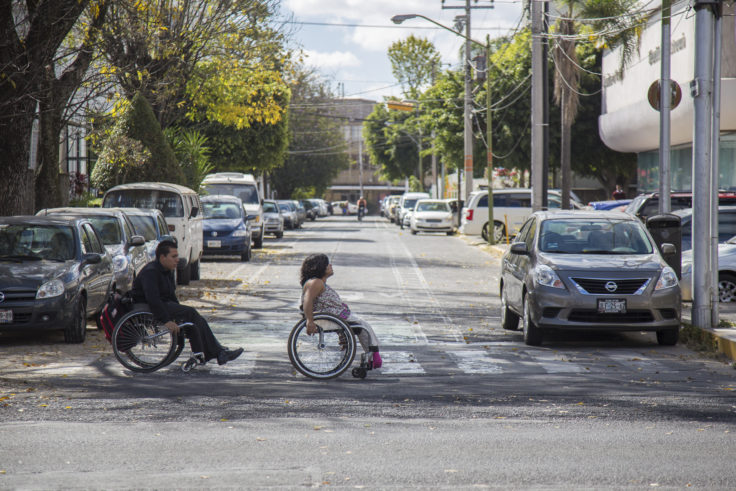April 11, 2024
2024 is a Historic Election Year and the Climate Crisis is on Everyone’s Ballot
This is poised to be a world-changing year. For countries across the globe, 2024 will be a turning point in terms of politics, with people from at least 64 countries voting in major national elections.
It is estimated that more voters than ever in history will head to the polls this year, covering nearly half of the world’s population. On the urgent issue of climate change, these elections — and the decision-makers poised to assume power — will have a resounding impact on policies and practices for years to come. As we all know, rising temperatures and greenhouse gas (GHG) emissions continue to exacerbate natural disasters and weather events around the world. The views and platforms of the policymakers elected this year will be consequential for how their nations tackle the intensifying climate crisis. 2023 was notably the warmest calendar year to date with a global average temperature of 14.98°C, and these effects can be seen and felt across the board, from food production to supply chains to air quality.
Energy-related emissions from the transport sector play a significant role in the warming of the planet. Currently, transport generates about a fourth of global GHG emissions, second only to the electric power sector. There are certainly opportunities for governments to reach their climate objectives through the promotion of sustainable, equitable transport policies and infrastructure. The question remains, as we enter this historic election cycle, whether decision-makers will advocate these crucial climate solutions or continue unsustainable patterns of development. In several of the key regions where ITDP operates — including the US, India, Indonesia, and Mexico — 2024 will determine whether sustainable transport will be elevated as part of the national and international climate agenda.

Commitments to the Paris Agreement
In response to the climate crisis, COP21 Paris famously resulted in an international treaty obligating a majority of the world’s nations to outline their plans to lower GHG emissions. This binding agreement not only holds signatories accountable for emissions but also encourages them to take measurable actions in support of a global effort to address climate change. Beginning in 2020, the parties to the Paris Agreement must submit Nationally Determined Contributions (NDCs), strategic climate action plans that are meant to be iterative, on a five-year basis. For the US, India, Indonesia, and Mexico, all amongst the top fifteen highest emitting nations, the goals that each country has outlined in their NDCS are already at risk of falling behind.
To avoid the worst outcomes of the climate crisis, the governments of these nations (and many others) must take rapid action to reach their Paris Agreement objectives, and this begins with a more strategic focus on transformations in the transport sector. These nations’ ongoing fossil fuel consumption, rising emissions, and worsening air quality are all outcomes of urban passenger transport too heavily dependent on private vehicles. The only chance they, and the world, have of limiting warming to less than 1.5°C is through substantive change in the urban planning and transport sectors. With each of these countries heading into a major election, let us take a broad look at recent regional actions on climate and transport and what will be at stake at the ballot box.

Download ITDP’s Compact Cities Electrified: United States report that outlines the benefits of compact planning and vehicle electrification for the US’ future.
United States: Second Largest GHG Emitter Globally
A significant piece of environmental-focused legislation passed in the US recently under the Inflation Reduction Act of 2022, which includes extensive actions to directly address climate change through a green energy transition. The Act aims to stimulate a cleaner economy with a combination of grants, loans, tax provisions and incentives to accelerate the deployment of clean energy, clean vehicles, clean buildings and clean manufacturing. A key goal of the Act is to reduce carbon emissions by around 40% by 2030. In total, around $370 billion USD will be disbursed for measures dedicated to improving energy security and accelerating clean energy transitions, the largest investments in the country’s history focused on addressing climate change.
With the closely-watched 2024 US Presidential and Congressional elections, however, whether the elected officials will expand or roll back these commitments is a major concern of many climate and transport stakeholders. The US famously withdrew from the Paris Agreement in 2020, sparking controversy amongst many in the national and international communities. The current Administration reversed the withdrawal process and rejoined the Agreement while also pledging making significant pledges toward advancing the US’ sustainability infrastructure. The political realities reflected in this type of turnaround demonstrate the high-risk nature of the current discourse in the US that, as the world’s largest economy, will continue to have unfortunate consequences on our environment and communities.
In the 2024 election, climate change remains a key debating point with differing views that is, oftentimes, divided along party lines. An important question — “Do you believe human behavior is causing climate change?” — was posed at the first debate among GOP primary candidates in 2023; however, moderators had a difficult time discerning a clear answer from the participants. Individual stances on climate change have largely depended on demographics in the US, with people of color (disproportionately affected by climate disasters) and women considering it a higher political priority than many of their white and male counterparts.
When it comes to the transport sector, the current Administration has developed several measures to address emissions, promote equity, and highlight sustainable mobility through efforts like the USDOT’s federal Climate Action Plan. The transport sector accounts for almost a third of emissions in the United States and the current Administration has set a target for a 50% reduction in transport-related emissions by 2030. The USDOT Plan also seeks to leverage key development strategies that include enhancing transit-oriented development, investing in public transport infrastructure, prioritizing vehicle electrification, and supporting more forms of renewable energy for individual use.
As ITDP research has found, compact and mixed-use planning coupled with transport electrification is the only way to substantially reduce transport emissions by 2050 while also providing significant cost savings for everyday Americans that will improve overall quality-of-life overall. In order for the country to build on its recent progress in climate investments, both local and national governments will need to double down on implementation going forward. With the US’ outsized influence on global affairs and policy, the outcomes of the election will be a telling sign of whether the nation and the world can continue its trajectory or risk moving backwards.

Learn more about the work of ITDP India.
India: Third Largest GHG Emitter Globally
India has set a goal of reaching net-zero emissions by 2070 and has expressed a broader commitment to a large-scale transition to green energy. Despite this goal, and India’s position as the world’s third-largest emitter, national action on climate change has been excluded from political discourse when faced with competing objectives for economic growth. Indians are highly vulnerable to climate crises, with 86% of the days in 2023 recording extreme weather events nationally. Climate advocates have criticized the current government for prioritizing business and mining interests over environmental protections. As a result, climate issues often get pushed aside or grouped in with pledges for related policies without directly addressing the causes of energy-related emissions.
Some signs of progress are being made however. Recent policies in India — particularly within the transport sector — offer promising steps, despite often taking a backseat amongst the hyper-partisan political debates that are ongoing in India. Putting more of a spotlight on national successes on sustainable transport has the potential to help set a more positive tone and stimulate additional actions in the lead up to this year’s elections. For example, the country’s rapid transition towards electric bus fleets in many cities, due in part to a robust national subsidy scheme, is encouraging more of an uptake in electric and hybrid vehicles across the board.
In addition, the government has facilitated the procurement of close to 5,450 buses in five major cities over the course of just two years. The current national government has also set a broader plan to invest the equivalent of $7 billion USD in electrifying transport infrastructure which, coupled with sustainable and compact planning, can have a major role in reducing the country’s emissions. Regardless of the political platform, prioritizing policies focused on improving access to public transit, pedestrian and cycling infrastructure, and green space will undoubtedly help improve livability and economic development across India.
The nation is increasingly situated on the frontlines of the climate crisis as it takes the mantle from China as the world’s most populated country. Local and national decision-makers need to put more of an emphasis on sustainable mobility as a climate solution as part of this year’s election cycle. Such commitments are not just about reducing emissions and broad climate goals – they also produce widespread health, wealth, and quality-of-life benefits for all Indians. Taking a people and equity-centered approach to the nation’s climate future, especially as an emerging world power, can make India a model for others to follow.

Learn more about the work of ITDP Indonesia.
Indonesia: Eighth Largest GHG Emitter Globally
Along with Indonesia’s plans to encourage widespread electric mobility, the country’s more recent environmental legislation has focused on the transition of high-emission infrastructure across the country. In 2021, Indonesia promised to cease all new coal plants across the country in a promising move. These efforts are part of national efforts to bring the country of over 275 million closer to meeting its ambitious climate goals by highlighting the impacts of the energy sector. The 2022 G20 Summit resulted in Indonesia joining the Just Energy Transition Partnership (JETP) alongside the US, helping to outline Indonesia’s role in creating cleaner jobs and greener infrastructure for the nation of islands bearing the brunt of climate change. The JETP includes funding for a major shift towards renewable energy as a means of reaching net-zero emissions by 2060 and supporting the electric vehicle transition, though much more work still needs to be done.
Alongside energy production, road transport is perhaps the most notable driver of emissions for Indonesia’s sprawling metro areas congested with cars and motorized two-wheelers. In fact, transport is the country’s second largest emissions source. This trend is concerning where emissions are continuing to rise in tandem with a growth in vehicle ownership but a lag in electric vehicle adoption and infrastructure. The Government of Indonesia continues to allocate substantial funding towards fossil-fuel energy subsidies in 2024 and this reliance on private cars perpetuates a negative impact for sustainable mobility strategies. Not only does it contribute to more emissions and poorer air quality, it worsens issues of congestion, public health, and accessibility in a country already known for its pollution.
The current Indonesian government is beginning to recognize these challenges and devising climate-friendly solutions with a focus on enhancing the quality of, and access to, public transport systems. Across the country, there has been a shift towards increased usage of public bus systems through a scheme called Buy the Services (BTS) that has grown to 10 cities since 2020. The program will be expanded to more regions as a means for introducing high-quality public transport and encouraging more of a shift away from driving and two-wheelers and towards mass transit. However, real progress can only be made with additional infrastructure investments that support more connected, transit-oriented development across Indonesia’s major cities.
To this end, in major metro areas like Jakarta, systems like Transjakarta have seen ridership begin to grow exponentially in recent years as part of the government’s push towards improving high-quality public transport in some arenas. The central government has also secured funding to build out BRT in other major Indonesia cities like Medan and Bandung. The Indonesian government continues to stress the importance of public infrastructure as a means to address congestion, reduce emissions, and improve livability, though substantial progress is still lagging behind. In a major year for political transitions, it is crucial that national officials continue to make climate action and inclusive mobility a focus of their platforms for the good of all Indonesians on the frontlines of a growing crisis.

Learn more about the work of ITDP Mexico.
Mexico: Thirteenth Largest GHG Emitter Globally
Mexico’s most notable piece of environmental legislation originated from the General Law of Climate Change in 2012, establishing various institutions to oversee the country’s climate strategies, including the National Institute of Ecology and Climate Change, the Climate Change Council, and the Inter-Secretariat Commission for Climate Change. The legislation not only established these organizations, but included funding for a series of energy efficiency projects to limit emissions. Despite these improvements, public controversy has arisen around the current Mexican government’s decision to label certain funding plans as climate-related expenditures. Much of the funding, however, has ultimately gone towards the expansion of fossil fuel infrastructure for state-owned energy companies without discernible renewable energy objectives.
At the same time, Mexico has continued to set targets to increase the share of its state-owned energy companies in the electrification market. This expansion includes investing in the enhancement and modernization of Mexico’s power plants, including the largest Photovoltaic Plant in Latin America, as part of a broader renewable energy push. With the country’s upcoming Presidential elections, debates over the government’s overall accountability on climate have been at the forefront of public discourse. For example, in spite of the extreme warming patterns facing the country, Mexico has continued to invest in fuel and oil refineries that will continue to raise emissions.
Some presidential candidates have, however, proposed shutting down major polluting refineries and focusing more on flagship renewable energy projects in hopes of taking Mexico in a different direction. Because of these contradicting actions and views from politicians, strategies for achieving tangible progress on environmental legislation needs to be front-and-center in this year’s election cycle. With more than half of Mexico’s urban emissions coming from road transport in particular, prioritizing sustainable transport is one important avenue that needs more of a spotlight.
To this end, Mexico has made certain achievements under recent governments to enshrine and recognize the right to mobility for its citizens. Notably, the country established a constitutional right to safe mobility and enacted supporting laws and protections, such as the General Law on Mobility and Road Safety and the National Strategy on Mobility and Road Safety, that will help enhance public transport and infrastructure. The government also put forth proposals to invest in newer forms of electrified public transport across the country, including trolleybus lines. To provide more accessibility for Mexicans, the government aims to expand trolleybus corridors in key urban areas to supplement existing BRT systems and active mobility networks. In this election year, it is important that current and potential policymakers commit to transparency and accountability when it comes to mobility legislation to ensure that Mexico breaks patterns of urban sprawl and inequities and embraces more progress.

Ultimately, with all of these countries being vital actors in the global policy arena, the results of the 2024 elections will determine the regional trajectory of sustainable transport and climate action for years to come. For the work of ITDP and our partners, the political positioning of both local and national elected officials can make all the difference on our ability to implement meaningful change in cities. The actions that these new governments decide to take will have far-reaching impacts on whether the world can stem the tide of climate and health crises before it is too late. Divisions among political parties and in public discourse will undoubtedly present significant challenges, but can also open new avenues for international cooperation if decision-makers make the effort.
What the planet and climate urgently need now is a united front. Governments can reimagine unsustainable patterns of development – especially in the highest-emitting regions – but only with elected leaders at the helm willing to work towards sustainable, equitable futures for us all.
